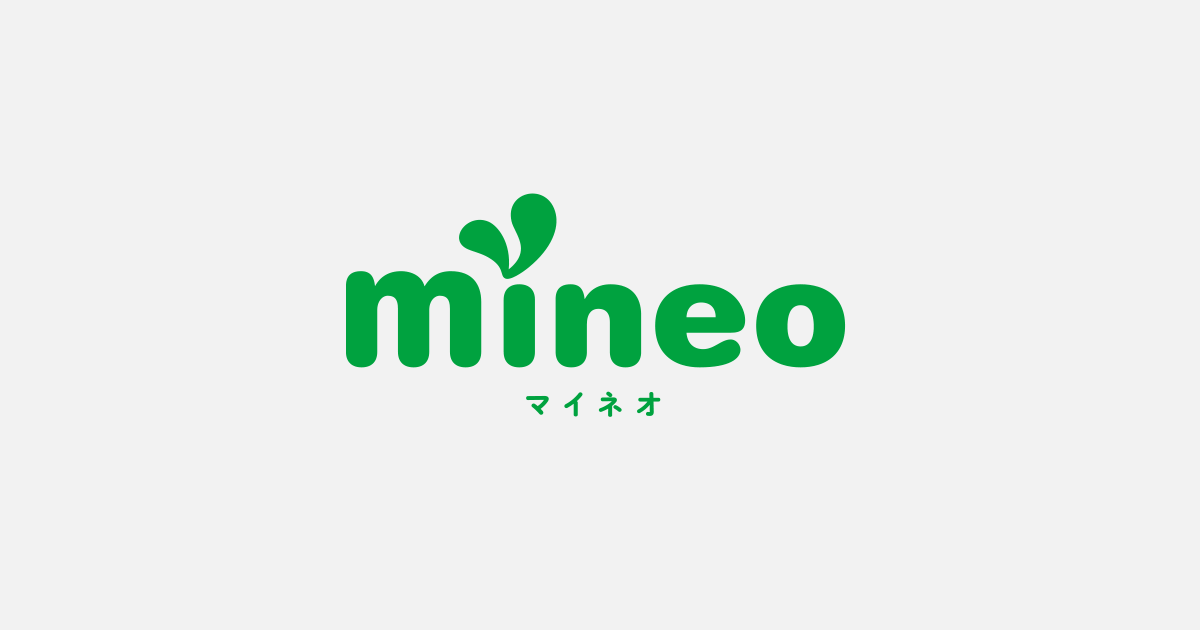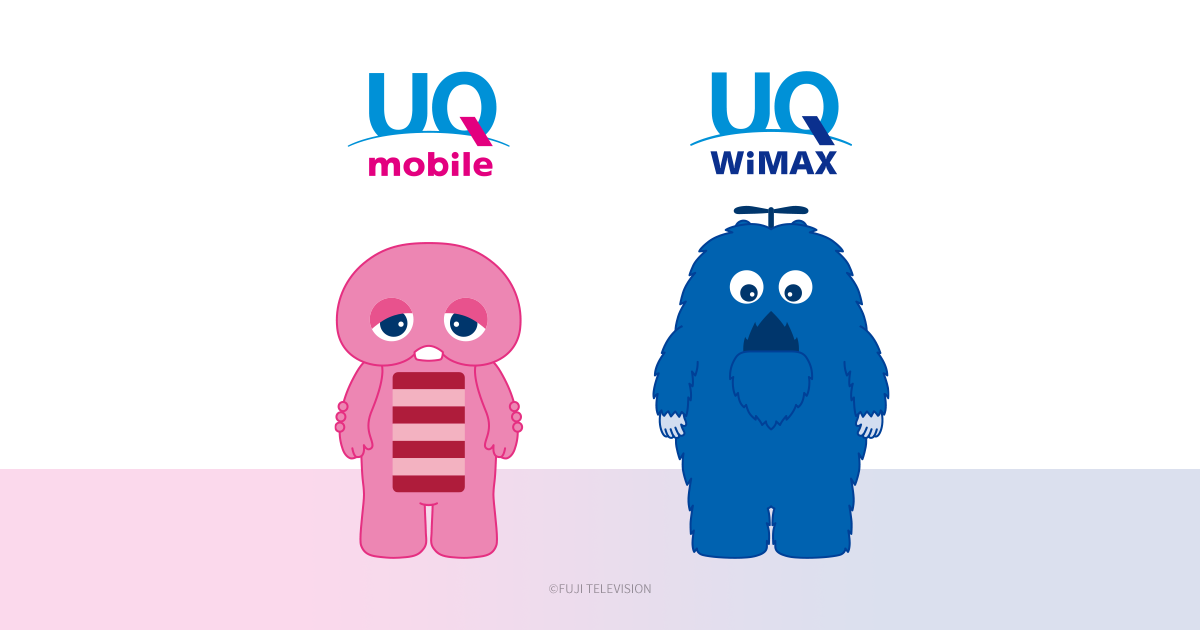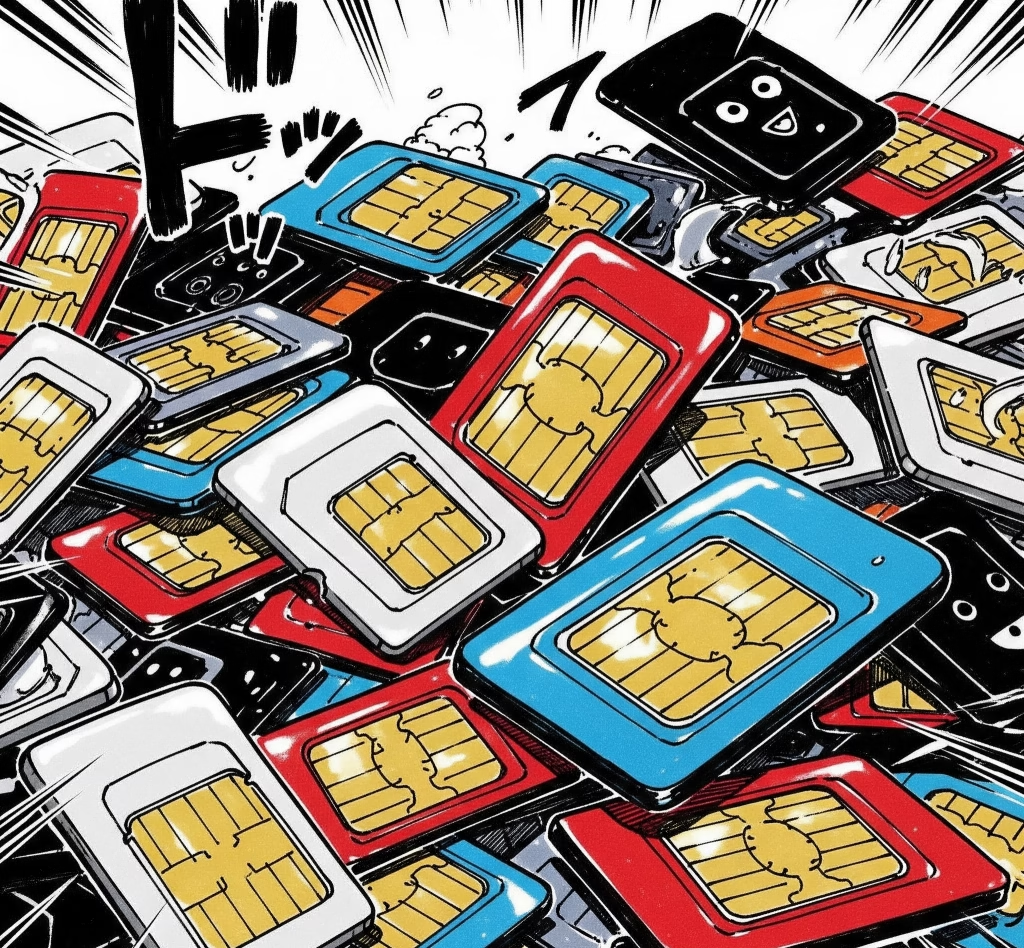Most people these days can’t live without their mobile phones. More specifically, their smart phones. For the most part, smart phones need internet service to be useful. When you are at home or work, you probably have WiFi, but when you’re out and about, you need mobile data service to be able to do much of anything. Also, even if your data needs are 100% met by WiFi, you need mobile service in order for phone calls and SMS messages to work.
Kakuyasu basically means “Inexpensive” in Japanese. Therefore, Kakuyasu SIM cards refer to SIM cards that are less expensive than the standard SIM cards. Overseas, these are often referred to as MVNO services, which refers to the fact that they are not offered by the major incumbent mobile carriers, but minor “Virtual” carriers which lease the network from the major carriers.
For background, there are Four major mobile service providers in Japan:
- NTT Docomo (Ahamo)
- KDDI au / Okinawa cellular (Povo, UQ Mobile)
- Softbank Mobile (Y! Mobile, Line Mobile)
- Rakuten Mobile
The first three have been around for a long time, although Rakuten is a more recent entry.
The names in parenthesis above are the lower cost brands from each carrier. For example, NTT Docomo is the “Premium” brand, but since the carriers realized they were losing market share to MVNOs, they launched their own less expensive brands as well.
In most cases, these sub-brands are still more expensive than the MNVO carriers, so I will not cover them much here.
Rakuten mobile started out as an MNVO, and then started building their own towers to become a full fledged operator.
Some Popular Kakuyasu Brands
- Mineo
- NURO Mobile (Sony)
- IIJMio
- UQ Mobile
- OCN Mobile (Not accepting new contracts)
I won’t try to create a whole list, because there are entire sites devoted to this.
Instead, I want to make a few main points:
- These cheaper alternatives exist. If you didn’t know, now you do.
- These cheaper alternatives lease the networks from the major carriers (MNOs), or are run by them in some cases.
- You’ll get less data, but if you have WiFi at home then you don’t need much data. If you don’t and you watch a lot of videos, then any amount of data won’t be enough. (More on this later)
- You can buy your phone directly from Sony, Apple, etc., or buy a used phone. There is no need to buy an overpriced phone from your carrier.
- You can cut your phone bill in half or more compared with a major carrier in most cases.
Common Objections
- I often have people tell me “Oh, but I don’t trust this small unknown company, I’ve been with my carrier for years”. These small (and not so small) companies are leasing infrastructure from the major carriers in most cases, so the signal strength will be what it always was. The internet may be faster or slower for other reasons. A company doesn’t need to be large to set up the virtual infrastructure. In the worst case, you can switch carriers again if you don’t like the one you have selected. Having stayed with your current carrier for years is not a good reason to continue to pay too much.
- The second thing people tell me is “Oh, but I need all this data I have… I watch movies all day on my phone…” First of all – why? Get a computer or something with a bigger screen. Second of all, if you are watching streaming movies or YouTube, etc. all day at home then you should get home internet and use WiFi. You will have much faster internet, and you will save money by getting Hikari fiber and switching to a cheap kakuyasu SIM. If you are constantly downloading huge amounts of data outside your house, then even 50GB may not be enough. I know people who pay Docomo over 7500 per month for “Docomo MAX”, and still and up with slow speeds and stuttering video at the end of the month. Even if you want to watch a lot of video outside of the house at places where you don’t have WiFi, you can download videos from Hulu, YouTube, and most other streaming services when you are in WiFi range, and watch them later.
- The third thing I sometimes hear is “But I have a contract on my phone, I’m still paying for it”, or “I can’t afford to pay for a phone all at once”. Honestly, phone financing is a scam. If you can’t afford to pay for a new phone all at once, don’t buy one. You should re-evaluate your financial situation instead. I’m not saying this to be mean, it’s just the truth. These days, even a 3 year old phone works just fine for most anything, and you can pick them up dirt cheap. You can cancel your contract, pay the remaining loan balance, and still come out ahead by switching to Kakuyasu SIM. Also, if you insist on going into debt just to buy a phone, you can buy one online from Apple, Sony, and others with financing that will let you make (for example) 12 or 24 monthly payments with 0% interest through JACCS or the like. Rentio.jp will even rent you one so you can try before you buy.
- The final objection is “But I have time left on my contract”. You will always have time left on your contract, that’s by design. The sooner you get out, the more money you will save. Just bite the bullet and do it. Yes, typically there is a time period every 2 years where you can cancel for free, but that may be a long time to wait, and you may forget by then. If you have to pay a 10,000 JPY cancellation fee, but then you save 3,000 – 6,000 per month, isn’t that worth it?
Calculation
Just as an example, let’s take a look at Sony’s NURO Mobile VM Plan.
This plan has 5GB per month with voice and SMS service for 990 JPY. (You can up that to 10GB for 1485 JPY). You can carry over unused data to the next month, and there is no cancellation fee.
You can bring your existing number (SMP) and phone, and select Docomo, au, or Softbank infrastructure. This means you can get exactly the coverage you had, and even bring a phone locked to one of those carriers.
If you were paying 5,000 per month to a major carrier, and you could lower that to 1,000 or 1,500 per month, that would be a savings of which is 42,000 to 48,000 JPY per year.
Personal Experiences
I personally have had accounts with Softbank Mobile and then NTT Docomo. My phone bill was usually over 6,000 per month.
- Softbank’s data dependent iPhone plan was a scam, because the price was lower than the fixed plans only if you stayed under 11 MB per month, which is nearly impossible. As soon as you exceeded the 11MB limit, the dynamic plan costed more than the fixed plan. This is old information now, but I see similar plans in place now from other carriers. They lure you in with a lower starting price, and set the limit at which the price increases low enough so that most people will exceed it without realizing. They locked their phones not just to the carrier, but the device-specific plan, and included bloatware on the Android phones they sold as well.
- Docomo’s plans were expensive, and their Android phones also included bloatware.
In both cases, they used “Free” phones to attract customers, while I had to pay over 6,000 JPY per month, every month, whether I had replaced my phone recently or not. “Free” phones are simply subsidized by high service costs.
Since switching to OCN, I pay something like 1,500 JPY per month, and have done so for more than 10 years. I “only” get 170 MB per day, but that is enough for Line, Google Maps, web browsing, and most other normal activities that don’t involve streaming video or downloading app updates. That means I have saved over 400,000 JPY over the past 10 years with only very minor inconvenience. Sure, there is no “Free” phone, but in exchange, I can spend what I want, when I want.
When I first switched to OCN, I continued using the mobile phone I already had from Docomo, but then later bought new phones directly from Sony’s web site. These phones are unlocked and don’t contain bloatware. Currently, Sony phones bought directly from their site can have double the storage of those sold by the major carriers.
I have my phone set to never download app updates over mobile networks, and I download offline videos from places like YouTube ahead of time when I am on WiFi, so I can watch them when I am outside if I want to without using mobile data.
I have lightening fast hikari fiber at home, which means I can use my computer stress free without tethering, and do things that require hundreds of GB of data transfer like: like backing up my computer over the internet, downloading virtual machines, OS updates, high-bitrate 4k video, and more. I can of course use this internet with my phone via WiFi, so there is simply no need for a large data plan.
I have also used Nuro mobile, but switched to OCN for two reasons:
- OCN has a “Data share” option, where you could have multiple SIM cards attached to the same data plan. This allows you to have an additional SIM card for, say, a tablet or extra phone without paying much more.
- OCN has a daily limit option, as opposed to a monthly limit. This means that if you accidentally do something that uses a lot of data, it won’t affect you from the next day. Say, for example, you accidentally downloaded an operating system update that was 2GB to your phone. If you have a monthly limit of 3GB, then you just used more than half of that, and now you might run out of data before the end of the month. If you have a daily limit, your connection will only be throttled for the rest of day.
OCN isn’t accepting new contracts anymore, but it’s worth checking out other options, since there are a variety of different plans available.
Conclusion
* The short summary is, you almost certainly don’t need more than 3 GB of mobile data monthly. *
- You only need that much if you do a lot of video watching on your phone. Even then, you could do that via WiFi both faster and cheaper.
- If you are truly a nomad who needs lots of data everywhere you go, then you are better off getting some sort of Pocket WiFi, such as UQ WiMax, which has much closer to unlimited data that you can share with not only your phone, but also your tablet, PC, portable game system, etc.
- Remember that you can download video and do things like app updates when you are in WiFi range.
- Kakuyasu SIM providers use the same networks as normal providers, so you will get the same reception and signal strength as with the major carriers.
- There may be minor speed differences around peak times, such as lunch time. Some plans have lower speeds all the time, but still fast enough to watch streaming video, and those plans include more data.
Links & References








Comments